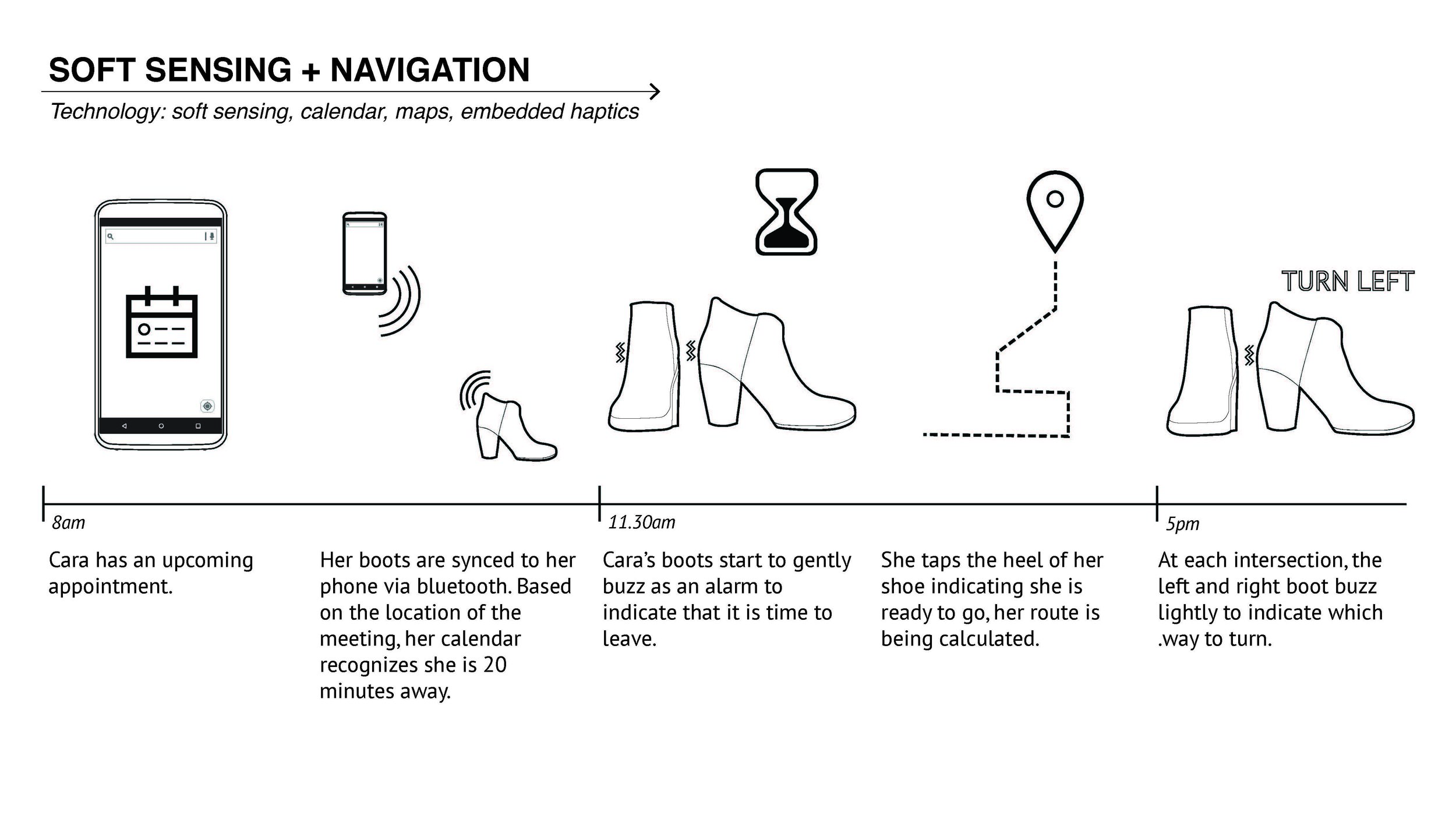Project Overview:
Emerald City was a User Experience and Research project I conducted during my internship at Intel. We had identified the women's shoe market as a potential opportunity for embedded technology due to the major focus being on men's shoes thus far.
Team: The team for this project included Caroline Foster, Reema Upadhyaya and Natalia Pulido. My role was Design Research, User Experience Design and Technology Prototyper.
Methods: Market Study, Contextual Interviews, Design Probes, Personas, Day in the Life, Technology Prototyping, Data Collection and Analysis, Technology Integration.
Methodology:
Brainstorming:
We began with a general brainstorm around three main areas: sensing technologies, user motivation and user feedback.
Landscape of Technology Exploration
Contextual Interviews:
Based on the brainstorm, we were able to develop questions for a contextual interview with 10 study participants, which we took turns conducting at participant's homes. The objective of the interviews was to understand consumer habits, public behavior, movement, purpose and style of the women's shoe market.
We documented shoe storage habits of the targets users, which were professional working women in their 20s to 40s.
As well as items that they carried with them everyday to understand their general habits.
Design Probes:
We developed design probes, a process developed at the Royal College of Art for Precense in 1999, that would help us get to know our target users by tapping into the rich context of a woman's everyday life. The probes also acted as props during the interviews, which helped us tap into a more creative aspect of the interview process, to inspire interviewees to imagine possibilities for the technology, without having to converge on a singular truth. The probe artifacts, asked interviewees to describe their daily commute, the pain points of their shoes through drawing, narrowing to their essentials on a trip, as well as photo prompts as to what they might wear in different weather conditions.
Personas:
From this, we were able to develop personas of our target users. This is an example persona for a young working professional in a creative field.
Day in the Life:
Through the contextual research, we were also able to identified technologies that our users would appreciate in their shoes. We developed a few scenarios of a day in the life with the smart shoes, which I created timeline based diagrams to help communicate this. This also helped determine what technologies I would begin to include in a technology prototype. We identified that boots would be the most appropriate type of shoe to develop with, as it was weather versatile, suitable for professional wear as well as embedding electronics.
Scenario 1: Soft Sensing and Navigational Haptics
Scenario 2: Activating Safety Protocols
Scenario 3: Weather Awareness and Notification
Technology Prototyping:
Through the scenario designs, we were able to determine a few elements to prototype: haptics, emergency messaging and two forms of notification display via LEDs and E-Ink Screens. I then created a Bill of Materials, ordering parts, building the circuitry of the electronics as well as integrating the circuitry with the shoe. I also programmed the Microcontrollers to send notifications and receive signals via radio frequencies.
Circuit Diagram:
Solar Harvesting:
Another area of interest was energy harvesting. We wanted to understand if solar energy was a technology we could introduce to footwear. I developed a prototype through attaching 4 small solar cells to a shoe and collected energy data by wearing the shoe all day in two cities - New York and London.
Solar Cell Placement and Analysis:
User Testing:
After building a shoe prototype which had haptics placed in a few areas, I conducted some user testing to determine the most comfortable placement of the haptics. This also included a tap register test, to determine where it would be the easiest place for a user to achieve a consistent tap.
Final Prototype:
The final prototype included and E-Ink screen that would display different patterns for notifications. Haptic sensors which were placed on the insides of the shoes that would send notifications to the user when they needed to turn in a direction. A pressure sensor that would be placed on the inner side of the back heel of a boot for easy tap registration and LEDs with a custom 3D printed diffuser cover attached to the fronts of the boot for easy notification viewing.




































